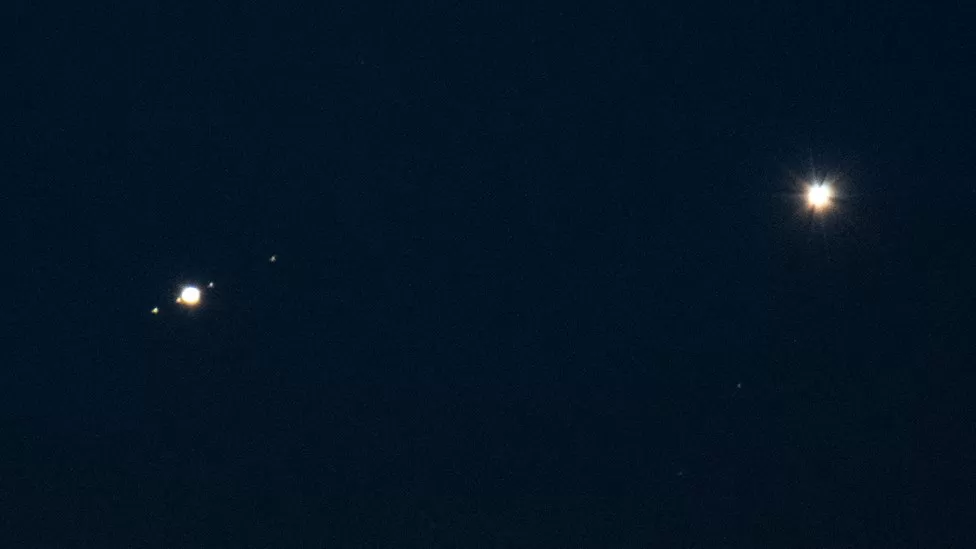Many of our readers, accustomed to looking at the starry sky on clear evenings, have already noticed a couple of bright stars appearing over the western horizon immediately after dusk. Some people have even managed to find out that these are not really stars, but Venus and Jupiter — the brightest and largest planets of the Solar System. The minimum visible distance between them is expected on March 2, although in space they will be separated by over 4,411 AU (660 million km).
Of all the star-like celestial bodies — that is, those that do not have a disk visible to the naked eye — Venus is undoubtedly the brightest. Its brilliance always lies in the range of negative stellar magnitudes, namely from -3.9ᵐ to -4.7ᵐ. The second place is taken by Jupiter (from -1.6ᵐ to -2.7ᵐ). Sometimes it is slightly surpassed in brilliance by Mars, but this happens only during the great oppositions that occur every 15-17 years. Therefore, if you see a very bright “point” star in the sky high enough above the horizon, slowly moving at the speed of the “standard” daily rotation of the celestial sphere, it is almost certainly Venus or Jupiter. And it is clear that their close rapprochement is also a rather rare and picturesque sight. On August 13, 1990, these planets came so close to each other that the distance between them was only two arc minutes. Without the help of at least small optical instruments, it was even difficult to see them as two different objects.

The closest approach of celestial bodies will take place on March 2, 2023, at about 6 o’clock world time or at 8 o’clock in the morning Kyiv time. Then they will be visible a little less than half a degree apart. Of course, at that moment it will be impossible to see them from the territory of Ukraine, since they will be low above the horizon, while the Sun will already have time to rise by 10-15° (depending on the place of observation). The planets will approach the upper culmination around two o’clock in the afternoon, when they will “disperse” at a distance of 35′. If the sky is clear, you can try to find them with a small telescope or binoculars. However, this will require some observation experience or instruments mounted on a tripod with the ability to point at coordinates. By the beginning of twilight, when Venus and Jupiter will be clearly visible in the darkened sky, this distance will increase to 40’.
In fact, the conjunction of the two brightest planets is not too rare an event: they occur on average every two years. But their rapprochement on November 22, 2065, will be special. On this day, Venus, from the point of view of ground observers, will partially enter the disk of Jupiter. Unfortunately, this phenomenon will occur only 8° from the Sun, and it will be very difficult to see. The best conditions for this observation will develop in the Western Hemisphere.
Follow us on Twitter to get the most interesting space news in time
https://twitter.com/ust_magazine

